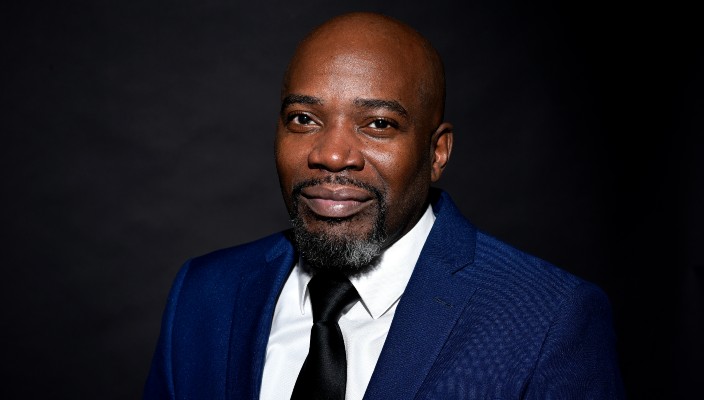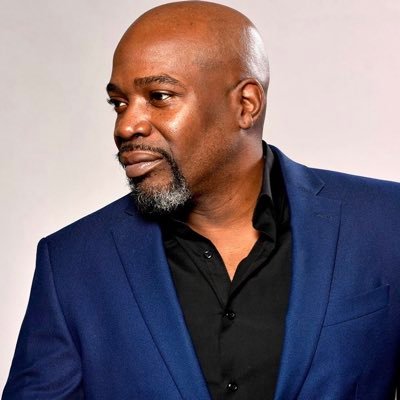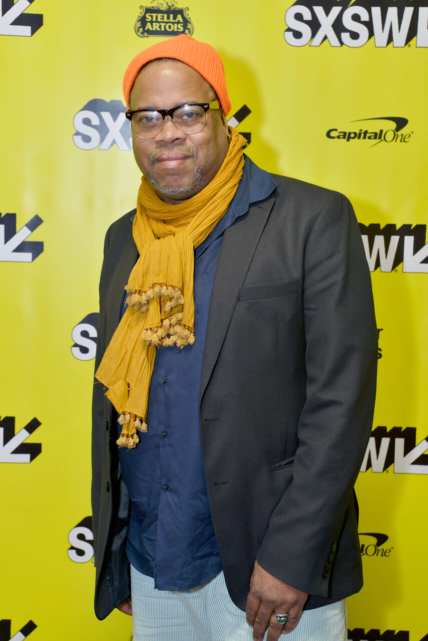An announcement—from Michael Harriot
The writer, cultural critic and wypipologist explains why he chose theGrio as his full-time home.

Ladies, gentlemen, play cousins, ballers, parlayers, preplanners of HBCU homecoming outfits, third-shift workers who sing second-soprano sitting in the first-row pews normally designated for deaconesses, Que dogs, double-Dutchers, Deshawns, debonair Detroiters draped in Stacy Adams drip, mothers of churches, aspiring majorettes, jungle lovers, rememberers of the time, The Time, Jesses and Jeromes, Roxannes, Shantés, stolen descendants of the Ashanti, scholars, slatherers of shea butter and Blue Magic, anyone who has ever come to their God “as humble as we know how,” wave-cap wearers, tender-headed lovers whose left ears bear the mark of the hot comb, those who end sentences with “nahmean,” you know who I mean:
You. Me. Black people.
My name is Michael Harriot. I write things.
After washing cars, picking corn, bartending, waiting tables, spinning actual records as a DJ and slicing roast beef sandwiches in a mall-food court Arbys, my professional career began at Benedict College, a historically Black college in South Carolina, the place I call home. It continued with the development of the university curriculum for “Race as an Economic Construct,” and blossomed into a rewarding five-year tenure with The Root. While serving as a writer for The Amber Ruffin Show, I continued to search for a platform for my journalism. I wanted to find a place that allows me to tell our stories in the unique language only heard during the periods of mandatory silence “when grown folks is talking.” It is the language that sounds like home.
On December 9, 1986, the Village Voice published “Cult Nats Meets Freaky-Deke” by journalist, critic and recently ascended ancestor Greg Tate, who wrote:
There’s no periodical on black cultural phenomena equivalent to The Village Voice or Artforum, no publication that provides journalism on black visual art, philosophy, politics, economics, media, literature, linguistics, psychology, sexuality, spirituality, and pop culture. Though there are certainly black editors, journalists, and academics capable of producing such a journal, the disintegration of the black cultural nationalist movement and the braindrain of black intellectuals to white institutions have destroyed the vociferous public dialogue that used to exist between them.
Sometimes—even in the spaces where we are allowed to raise our voices above a whisper—there is a tendency for us to leash our own tongues. As if every relevant form of American art, culture and communication we call “American” isn’t a co-opted piece of Black intellectual property that has been diluted until it eventually becomes ensconced in the mainstream (pronounced “hoo-why-itt”) orthodoxy. I have never understood why we would build our own soapboxes that are shallow impersonations of the people who mimic us.
I have always wanted to go home.
But where is home? There are countless spaces that will cherry-pick and curate a Black person to say 1,200 Black words as a palate-cleanser in the column next to the whitewashed story pleading for “African Americans” to fix a democracy that never existed. And that is not shade. Every Black person is a code-switcher and an assimilator on some level, including myself. I use semicolons and somewhere in my head, Shakespeare’s “Tomorrow and tomorrow and tomorrow” speech is nestled next to Black Thought’s Hot97 freestyle. Hell, I have ranted about predatory capitalism in a place named after a man who was “almost certainly the Exalted Cyclops (chapter president) of the Montgomery chapter of the Klan.” We all wear the mask that grins and lies.
“I decided that what black culture needs is a popular poststructuralism — accessible writing bent on deconstructing the whole of black culture,” Tate wrote. “If you think I’m going to try to fill it, you got another thing coming. I’m bold but I ain’t that bad. This whatchamajiggy here is about how black aestheticians need to develop a coherent criticism to communicate the complexities of our culture.”
I don’t know if that idyllic place Tate wrote about will ever exist again. To be sure, there is a long history of places where Black journalism has thrived but, exactly 35 years later, I concluded there was only one place for me. Now, I’m bold but I ain’t that bad, so I come to you as humble as I know how.
This whatchamajiggy here is about how theGrio is where Michael Harriot now writes things.

Michael Harriot is a writer, cultural critic and championship-level Spades player. His book, Black AF History: The Unwhitewashed Story of America, will be released in 2022.
Have you subscribed to theGrio podcasts “Dear Culture” or “Acting Up?” Download our newest episodes now!
TheGrio is now on Apple TV, Amazon Fire and Roku. Download theGrio.com today!


